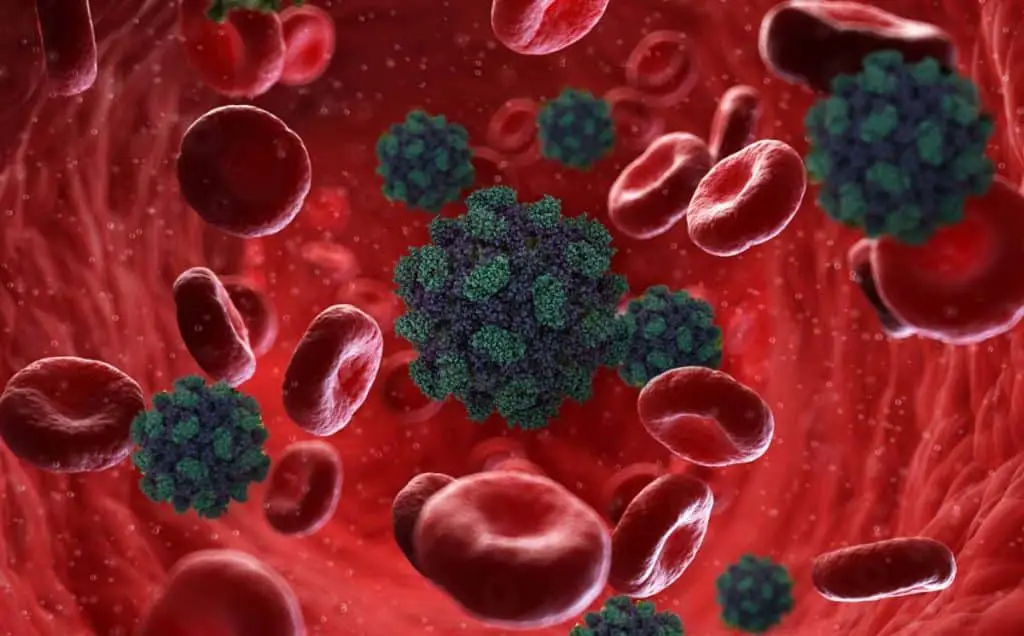In chronic hepatitis B, the liver contains immune cells that may destroy cells infected with the hepatitis B virus.hepatitis Bbut they are inactive. A team from the Technical University of Munich (TUM) has discovered that cells in the blood vessels of the liver start a “sleep timer” that turns off immune cells. Targeting this mechanism could be a starting point for immunotherapies.
The Dynamics of Hepatitis B
Hepatitis B is a widespread disease. According to estimates by the World Health Organization (WHO), 250 million people worldwide suffer from chronic hepatitis B. The most common health consequence of chronic hepatitis B is liver damage. Often, the body’s immune response to infected cells causes the damage, not the virus itself: immune cells trigger inflammatory processes that can lead to fibrosis (scarring of liver tissue) and liver cancer.
“In chronic hepatitis B, the body’s immune system tries to destroy infected liver cells, causing long-term damage, and still cannot get rid of the virus,” says Percy Knolle, professor of molecular immunology at TUM. In particular, in chronic infections, some immune cells whose receptors could recognize and destroy the hepatitis B virus are inactive.
A team led by Prof. Knolle describes the reason for this on Nature. Hepatitis B virus specifically infects hepatocytes. These cells make up the largest part of liver tissue. They are supplied by small blood vessels lined with endothelial cells.

Immune cells that enter the liver via the blood reach infected hepatocytes only through special openings in these endothelial cells. They protrude extensions through these openings to reach infected hepatocytes and trigger their destruction. In doing so, they are forced into close contact with the endothelial cells.
“We have shown that endothelial cells start a kind of molecular sleep timer in some immune cells, cytotoxic T cells that can detect hepatocytes infected with the hepatitis B virus,” says Dr. Miriam Bosch, first author of the study.
“The timer starts ticking as soon as the T cells come into contact with infected hepatocytes.” The longer the T cells remain in contact with endothelial cells, the weaker their activity becomes, comparable to the volume of music that decreases before the sleep timer stops it completely.
Specifically, endothelial cells use the cAMP-PKA pathway to deactivate the signal transmission of receptors with which T cells recognize the hepatitis B virus and through which they are activated. As a result, immune cells no longer attack infected cells and, above all, are unable to proliferate.
“We think this mechanism evolved to protect the liver,” Knolle says. “The time limit prevents immune cells from overproliferating during an infection and potentially doing critical damage to the liver when they destroy infected hepatocytes.”

In some cases, however, the window of time to fight the virus is apparently too short and the virus escapes the control of the immune system. Because new T cells continue to attack infected hepatocytes, chronic hepatitis B leads to organ damage despite the protective mechanism.
“Now the search begins for ways to influence this mechanism,” says Knolle. “By doing so, we could support the immune system in effectively fighting off chronic hepatitis B infection.”
On the one hand, targeted immunotherapies are conceivable in which T cells are manipulated in such a way that they are no longer receptive to signals from endothelial cells. On the other hand, it may also be possible to deactivate the mechanism by means of small molecules that target this mechanism.
To do this, however, it is essential to selectively deliver active substances to immune cells in the liver and thus avoid impairing vital processes in other cells of the body. Researchers believe that such therapies could enhance the effect of vaccinations and thus help combat chronic hepatitis B, which is particularly prevalent in poorer regions of the world.
Could a new immune cell therapy fight hepatitis B infections?
Chronic infection with hepatitis B virus (HBV) causes progressive liver problems, and eradication of the virus remains a formidable challenge.
Research published in FEBS Letters, however, indicates that a treatment that enhances the effects of immune cells called T stem cell memory (TSCM) cells could represent a promising strategy to combat HBV.

In the study, the investigators identified TSCMs in patients with chronic HBV infection and analyzed their effects in a mouse model of HBV. After introducing TSCMs from patients into mice, the immune cells differentiated into cytotoxic T cells and mounted a strong response that led to the elimination of HBV-infected liver cells. Therefore, increasing patients’ TSCMs may help the immune system defeat the virus.
“Our hepatitis model may reveal how TSCMs differentiate into cytotoxic T cells and unravel the fate of differentiated T cells. Such information could significantly advance future research on T-cell therapies,” said corresponding author Hiromi Abe-Chayama, Ph.D., of Hiroshima University in Japan.
Hepatitis: liver failure attributable to a compromised blood supply
In severe cases, viral hepatitis infection can cause liver failure. A team from the Technical University of Munich (TUM) has now discovered that immune cells attack cells in the vascular system, which disrupts the blood and nutrient supply to the liver. This is responsible for the massive damage that causes liver failure. Using an animal model, the researchers were then able to identify an agent to prevent this lethal process.
A liver infection with viral hepatitis, such as the hepatitis B virus, can progress in several ways: the inflammation of the liver (hepatitis) may heal itself without any problems; the condition may become chronic and require lifelong medication; or the infection may be fulminant, or life-threatening. In the latter case, the immune-mediated damage to the liver is so severe that the organ fails, leaving a liver transplant as the last remaining treatment option.
Hepatitis viruses target liver cells, or hepatocytes. The immune system tries to control the infection by attacking and destroying infected liver cells with the help of certain immune cells, known as killer T cells. This process was previously thought to also be responsible for the severe organ damage that accompanies acute hepatitis.
Now, however, Dr. Dirk Wohlleber, head of the research group at TUM, and Percy Knolle, professor of molecular immunology, have come up with a completely different explanation. In collaboration with colleagues from the universities of Würzburg and Bonn (Germany), they have discovered that this organ failure is not actually caused by the death of liver cells, but by defects in the vascular system (blood vessels).

The liver is home to important cells called hepatic sinusoidal endothelial cells, or LSECs for short. These connect liver cells to the vascular system and regulate the exchange of nutrients and oxygen with the blood. They also have the ability to present small fragments of viruses on their outer membrane, similar to immune system cells.
The researchers observed that killer T cells specifically detected these viral particles, mistaking the LSECs for infected liver cells and destroying them. To do this, they used proteins that integrate into the cell membrane of the target cell and form a pore. Known as perforins, these proteins pierce the membrane and destroy the cell.
“We observed that the elimination of LSECs by immune cells has a huge impact on the liver tissue. The blood flow within the liver is greatly interrupted, with a large number of liver cells, even uninfected ones, dying as a result. This immune response has a much more dramatic effect than the attack on liver cells that are actually infected,” explains Wohlleber. This discovery was made possible by a new mouse model that the researchers specifically developed to replicate the fulminant course of viral hepatitis.
“Only now that we have identified the actual destructive mechanism in acute hepatitis can we consider new treatment strategies and specifically target this process,” says Knolle. Using their mouse model, the researchers were able to demonstrate that a new active substance can prevent fulminant hepatitis.
It is a perforin inhibitor, which prevents killer T cells from forming pores and thus protects LSECs from attack. This agent successfully protected mice from developing fulminant hepatitis, as LSECs remained intact, preserving the blood supply to liver cells.
#Hepatitis #sleep #timer #immune #cells #discovered